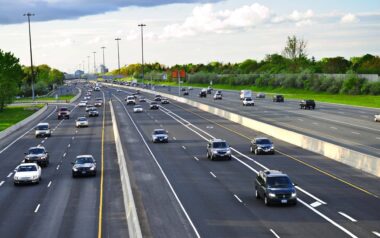With winter approaching and colder temperatures settling in, UK drivers face a risk that is often overlooked: fines for wearing inappropriate clothing while driving. The Department for Transport has made it clear that attire that impairs a driver’s ability to control their vehicle can result in significant penalties. This lesser-known rule could result in fines of up to £5,000 and points on a driver’s license.
Rule 97: What Does the Highway Code Say?
Rule 97 of the Highway Code outlines the requirements for drivers’ clothing and footwear. It states that drivers must wear clothing that does not hinder their ability to control the vehicle. Any items that restrict movement, visibility, or grip can violate this regulation.
Key aspects of Rule 97 include :
- Clothing must not hinder control: The driver’s ability to steer, operate pedals, or see clearly must not be impaired.
- Footwear must be appropriate: Shoes should not be too large or slippery, as they can affect pedal control.
These guidelines are particularly important during winter when bulky jackets, scarves, and gloves are commonly worn. These items, while keeping the driver warm, can limit a driver’s effectiveness on the road.
Consequences for Violating Rule 97
Failure to comply with Rule 97 can lead to serious penalties. If stopped by law enforcement, drivers could face:
| Penalty | Description |
|---|---|
| Fine | Up to £5,000 for unsafe driving due to clothing |
| Penalty Points | Three points on the driver’s license |
| Careless Driving | Possible charge for dangerous driving |
In extreme cases, continuous violations or accidents resulting from improper attire could lead to disqualification from driving.
How Winter Weather Affects UK Drivers’ Safety
Winter conditions present unique challenges for UK drivers, especially when sudden temperature drops occur. Wearing the wrong clothing can exacerbate these challenges and increase the risk of accidents. Common mistakes include:
- Wearing bulky winter coats: These can limit the driver’s range of motion and impair the ability to steer or react quickly.
- Leaving scarves or gloves on: These can obstruct visibility or reduce control over the vehicle’s controls.
Liam Barnes, Manager at TopReg, a road safety organization, emphasized the importance of wearing suitable clothing for driving: “Winter is a challenging time of the year to be hitting the roads, and this is made even worse if there’s a sudden cold snap like the one we’re expecting this week.”
Common Clothing Mistakes and Their Consequences
Certain winter clothing choices can significantly affect a driver’s ability to control their vehicle. Some of the most common issues include:
- Heavy winter jackets: These may limit arm movement, making it difficult to steer effectively.
- Bulky gloves or mittens: These can reduce grip on the steering wheel and pedals, increasing the risk of losing control.
- Scarves or hats: These items can obstruct peripheral vision, making it harder to spot potential hazards.
By removing these items before driving, motorists can ensure they maintain full control of their vehicle.
How to Stay Safe and Avoid Fines
To avoid fines and penalties, UK drivers should take these precautions to comply with Rule 97 and stay safe on the roads:
- Remove bulky clothing: Take off heavy coats, scarves, and gloves before driving.
- Choose appropriate footwear: Opt for shoes that offer grip and flexibility, and avoid boots that are too large or slippery.
- Adjust the car’s climate: Allow the car to warm up briefly before driving to avoid the need for extra layers.
- Ensure visibility: Check that nothing obstructs your line of sight or interferes with your ability to use the vehicle’s controls.
These steps help prevent accidents and ensure compliance with the law.
Although often overlooked, wearing appropriate attire and footwear while driving carries significant consequences. UK drivers are encouraged to follow the Highway Code’s guidelines, especially during winter, to ensure both safety and legal compliance. Failure to do so can lead to costly fines, penalty points on a license, and a higher risk of accidents.









